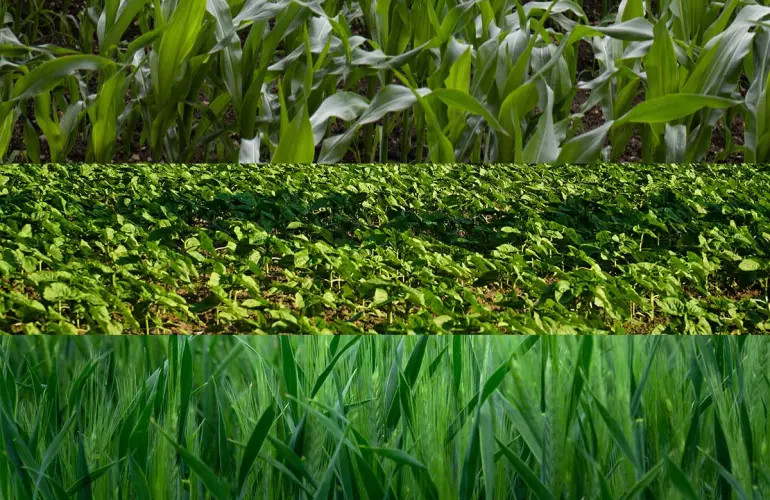
Spring crops are sown between February and May. Their name comes from their seeding date. Winter crops are planted between September and November. Plants used for spring sowing are often species like maize, sunflower and spring barley. But other crops can be sown too, particularly in systems such as SCA (Soil Conservation Agriculture) or AB (Organic Agriculture). Objectives, advantages, and challenges.
The benefits of alternating spring- and winter-sown crops
Agronomic theory recommends alternating winter crops with spring crops to get the most out of crop rotation by selecting different botanical families. The main objective is to avoid favourable conditions for pests and weeds. These practices can make weeding easier and reduce the quantities of synthetic inputs required.
In some regions, a monoculture system can be used, particularly with maize, which is well suited to certain soil and climate conditions. Being a high-yield crop, it is lucrative in some specialised market areas.
Cereals, oilseeds: what can be included in a crop rotation?
There are 3 spring crops commonly grown in different farming regions:
- Maize: This cereal crop generally has a lot of markets opportunities, for both human consumption and animal feed. The crop is simple to manage.
- Sunflower: This oilseed is also fairly simple to grow, requiring less than 8 interventions. It adapts well to dry soils, and even irrigated land. It is also an excellent choice to precede wheat.
- Spring barley: Spring barley is ideal for controlling grassweeds. It is very vigorous at the start and competes well with weeds.

The agronomic advantages of other spring crops: soya, sorghum, etc.
A more complex rotation makes it possible to integrate additional crop varieties into the farm. This will depend on market opportunities. On livestock operations, the crops are often used to feed the herd. Sowing sorghum is an economical choice. It is planted fairly late, in May. It is hardy and requires little care. It’s ideal as an alternative to maize on fields that cannot be irrigated, and a great solution for drought periods, such as has been the case over recent years. Incorporating sorghum into your rotation does not require a huge amount of investment in specific farm machinery.
Soya is generally sown at the end of April or beginning of May when the soil is warmer than required for maize. It can be drilled with a conventional seed drill for cereal crops and has very few enemies (pests and diseases). However, it is often advisable to inoculate the seeds the first few years, as symbiosis with rhizobium, which fixes atmospheric nitrogen in the soil, takes time develop. Beware of water requirements, which are the same as for maize. Other crops are possible too, such as lupins, peas, flax, and field beans. They are more common, however, in livestock operations or farming systems such as Soil Conservation Agriculture and organic farming.
